�
Spectral Analysis of Signals
Petre Stoica
Uppsala University
and
Randolph Moses
The Ohio State University
PEARSON
---
Pn'llti('t'
lIall
Upper Saddle River, New Jersey 07458
Library of Congress Cataloging-in-Publication Data
Spectral Analysis of SignalslPetre Stoica and Randolph Moses
p. cm.
Includes bibliographical references index.
ISBN 0-13-113956-8
1. Spectral theory I. Moses, Randolph n. Title
512'-dc21
QA814.G27
2005
00-055035
CIP
Vice President and Editorial Director, ECS: Marcia J. Horton
Executive Managing Editor: Vince O'Brien
Managing Editor: David A. George
Production Editor: Scott Disanno
Director of Creative Services: Paul Belfanti
Creative Director: Jayne Conte
Cover Designer: Bruce Kenselaar
Art Editor: Greg Dulles
Manufacturing Buyer: Lisa McDowell
Senior Marketing Manager: Holly Stark
© 2005 Pearson Education, Inc.
Pearson Prentice Hall
Pearson Education, Inc.
Upper Saddle River, New Jersey 07458
.---.
PEARSON
Pit»))! /( '('
Ittll
All rights reserved. No part of this book may be reproduced, in any form or by any means, without permission in
writing from the publisher.
Pearson Prentice BalInt is a trademark of Pearson Education, Inc.
MATLAB is a registered trademark of The MathWorks, Inc., 3 Apple Hill Drive, Natick, MA 01760-2098.
The author and publisher of this book have used their best efforts in preparing this book. These efforts include the
development, research, and testing of the theories and programs to determine their effectiveness. The author and
publisher make no warranty of any kind, expressed or implied, with regard to these programs or the documentation
contained in this book. The author and publisher shall not be liable in any event for incidental or consequential damages
in connection with. or arising out of, the furnishing. performance, or use of these programs.
Printed in the United States of America
10
5 4
1':;-:
6
3
2
9
8
7
ISBN 0-13-113956-8
Pearson Education Ltd., London
Pearson Education Australia Ply. Ltd., Sydney
Pearson Education Singapore, Pte. Ltd.
Pearson Education North Asia Ltd., Hong Kong
Pearson Education Canada Inc., Toronto
Pearson Educaci6n de Mexico, S.A. de C.V.
Pearson Education-Japan, Tokyo
Pearson Education Malaysia, Pte. Ltd.
Pearson Education, Inc., Upper Saddle River. New Jersey
-
�
Contents
List of Exercises
Preface
Notational Conventions
Abbreviations
1 Basic Concepts
Introduction
1.1
1.2 Energy Spectral Density of Detenninistic Signals
1.3 Power Spectral Density of Random Signals
First Definition of Power Spectral Density
1.3.1
1.3.2 Second Definition of Power Spectral Density
1.4 Properties of Power Spectral Densities
1.5 The Spectral Estimation Problem
1.6 Complements
1.6.1 Coherence Spectrum
1.7 Exercises
2 Nonparametric Methods
Introduction
2.1
2.2 Periodogram and Correlogram Methods
2.2.1
Periodogram
2.2.2 Correlogram
xi
xv
xix
xxi
1
1
3
5
6
7
9
13
13
13
16
23
23
24
24
24
v
i
I
\'
H
\
,
1
·1
~',l
"-i
11
Jr.•
i;~
Ie:~
n
/'.:
,.,
·1
;~
~1
.~
11
~
:.
I
••
�
Contents
vi
2.3
2.4
2.5
Radix-2 FFT
Zero Padding
Bias Analysis of the Periodogram
Periodogram Computation via FFT
2.3.1
2.3.2
Properties of the Periodogram Method
2.4.1
2.4.2 Variance Analysis of the Periodogram
The Blackman-Tukey Method
The Blackman-Tukey Spectral Estimate
2.5.2 Nonnegativeness of the Blackman-Tukey Spectral Estimate
2.5.1
Time-Bandwidth Product and Resolution-Variance Tradeoffs
in Wmdow Design
Some Common Lag Windows
Temporal Wmdows and Lag Windows
2.6.2
2.6.3 Wmdow Design Example
2.6.4
2.6.1
2.6 Window Design Considerations
2.7 Other Refined Periodogram Methods
2.8 Complements
Bartlett Method
2.7.1
2.7.2 Welch Method
Daniell Method
2.7.3
Sample Covariance Computation via FFf
FFf-Based Computation of Windowed Blackman-Tukey Periodograms
Data- and Frequency-Dependent Temporal Windows: The Apodization
Approach
Estimation of Cross-Spectra and Coherence Spectra
2.8.1
2.8.2
2.8.3
2.8.4
2.8.5 More Time-Bandwidth Product Results
Exercises
2.9
3 Parametric Methods for Rational Spectra
Introduction
Signals with Rational Spectra
3.1
3.2
3.3 Covariance Structure of ARMA Processes
3.4 AR Signals
3.5 Order-Recursive Solutions to the Yule-Walker Equations
3.4.1
3.4.2
Yule-Walker Method
Least-Squares Method
Levinson-Durbin Algorithm
3.5.1
3.5.2 Delsarte-Genin Algorithm
3.6 MA Signals
3.7 ARMA Signals
3.7.1 Modified Yule-Walker Method
3.7.2
Two-Stage Least-Squares Method
ARMA State-Space Equations
3.8 Multivariate ARMA Signals
3.8.1
I
JI
•
::
:!
27
27
29
30
30
34
39
40
41
42
42
44
45
50
52
52
53
55
58
58
60
62
67
70
75
90
90
91
93
94
94
96
99
100
102
• 106
107
108
111
113
114
�
Contents
3.8.2
3.8.3
Subspace Parameter Estimation-Theoretical Aspects
Subspace Parameter Estimation-Implementation Aspects
3.9 Complements
The Partial Autocorrelation Sequence
Some Properties of Covariance Extensions
3.9.1
3.9.2
3.9.3 The Burg Method for AR Parameter Estimation
3.9.4 The Gohberg-Semencul Formula
3.9.5 MA Parameter Estimation in Polynomial Time
",
3.10 Exercises
4 Parametric Methods for Line Spectra
Introduction
4.1
4.2 Models of Sinusoidal Signals in Noise
4.2.1 Nonlinear Regression Model
4.2.2 ARMA Model
4.2.3 Covariance Matrix Model
4.3 Nonlinear Least-Squares Method
4.4 High-Order Yule-Walker Method
4.5 Pisarenko and MUSIC Methods
4.6 Min-Norm Method
4.7 ESPRIT Method
4.8
4.9 Complements
Forward-Backward Approach
4.9.1 Mean-Square Convergence of Sample Covariances
for Line Spectral Processes
4.9.2 The Caratheodory Parameterization of a Covariance Matrix
4.9.3 Using the Unwindowed Periodogram for Sine Wave Detection
in White Noise
4.9.4 NLS Frequency Estimation for a Sinusoidal Signal
with Time-Varying Amplitude
4.9.5 Monotonically Descending Techniques for Function Minimization
4.9.6
4.9.7 A Useful Result for Two-Dimensional (2D) Sinusoidal Signals
Frequency-Selective ESPRIT-Based Method
4.10 Exercises
5 Filter-Bank Methods
Introduction
5.1
5.2 Filter-Bank Interpretation of the Periodogram
5.3 Refined Filter-Bank Method
Slepian Baseband Filters
5.3.1
5.3.2 RFB Method for High-Resolution Spectral Analysis
5.3.3 RFB Method for Statistically Stable Spectral Analysis
5.4 Capon Method
5.4.1 Derivation of the Capon Method
5.4.2 Relationship between Capon and AR Methods
vii
117
120
122
122
123
125
128
131
135
150
150
155
155
155
156
157
162
166
171
174
175
178
178
181
183
186
188
194
203
209
217
217
220
222
223
226
228
232
232
238
�
If
.~I
iii
Contents
5.5 Filter-Bank Reinterpretation of the Periodogram
5.6 Complements
5.6.1 Another Relationship between the Capon and AR Methods
5.6.2 Multiwindow Interpretation of Daniell
and Blackman-Tukey Periodograms
5.6.3 Capon Method for Exponentially Damped Sinusoidal Signals
5.6.4 Amplitude and Phase Estimation Method (APES)
5.6.5 Amplitude and Phase Estimation Method for Gapped Data (GAPES)
5.6.6 Extensions of Filter-Bank Approaches to Two-Dimensional Signals
5.7 Exercises
~ Spatial Methods
6.1
Introduction
6.2 Array Model
The Modulation-Transmission-Demodulation Process
6.2.1
6.2.2 Derivation of the Model Equation
6.3 Nonparametric Methods
6.3.1 Beamforming
6.3.2 Capon Method
6.4 Parametric Methods
6.4.1 Nonlinear Least-Squares Method
6.4.2 Yule-Walker Method
6.4.3
6.4.4 Min-Norm Method
6.4.5 ESPRIT Method
Pisarenko and MUSIC Methods
6.5 Complements
6.5.1 On the Minimum-Norm Constraint
6.5.2 NLS Direction-of-Arrival Estimation for a Constant-Modulus Signal
6.5.3 Capon Method: Further Insights and Derivations
6.5.4 Capon Method for Uncertain Direction Vectors
6.5.5 Capon Method with Noise-Gain Constraint
6.5.6
6.5.7 The CLEAN Algorithm
6.5.8 Unstructured and Persymmetric ML Estimates of the Covariance Matrix
Spatial Amplitude and Phase Estimation (APES)
6.6 Exercises
APPENDICES
A Linear Algebra and Matrix Analysis Tools
Introduction
A.l
A.2 Range Space, Null Space, and Matrix Rank
A.3 Eigenvalue Decomposition
A.3.1 General Matrices
A.3.2 Hermitian Matrices
A.4 Singular Value Decomposition and Projection Operators
242
246
246
250
253
256
259
262
269
275
275
277
278
280
285
288
291
293
294
295
297
297
297
298
298
300
302
306
311
319
326
331
334
342
342
342
344
345
348
351
�
Contents
A.5 Positive (Semi)Definite Matrices
A.6 Matrices with Special Structure
A.7 Matrix Inversion Lemmas
A.8 Systems of Linear Equations
A.8.1 Consistent Systems
A.8.2 Inconsistent Systems
A.9 Quadratic Minimization
B Cramer-Rao Bound Tools
B.1 Introduction
B.2 The CRE for General Distributions
B.3 The CRE for Gaussian Distributions
B.4 The CRB for Line Spectra
B.5 The CRE for Rational Spectra
B.6 The CRE for Spatial Spectra
",
C Model Order Selection Tools
C.1 Introduction
C.2 Maximum Likelihood Parameter Estimation
C.3 Useful Mathematical Preliminaries and Outlook
C.3.1 Maximum A Posteriori (MAP) Selection Rule
C.3.2 Kullback-Leibler Information
e.3.3 Outlook: Theoretical and Practical Perspectives
C.4 Direct Kullback-Leibler (KL) Approach: No-Name Rule
C.5 Cross-Validatory KL Approach: The AlC Rule
C.6 Generalized Cross-Validatory KL Approach: the GIC Rule
C.7 Bayesian Approach: The Bre Rule
e.8 Summary and the Multimodel Approach
C.8.1 Summary
C.8.2 The Multimodel Approach
D Answers to Selected Exercises
Bibliography
References Grouped by Subject
Index
ix
357
361
363
364
364
366
371
373
373
376
378
383
384
387
397
397
398
402
402
405
406
407
409
412
413
417
417
418
420
423
435
443
�
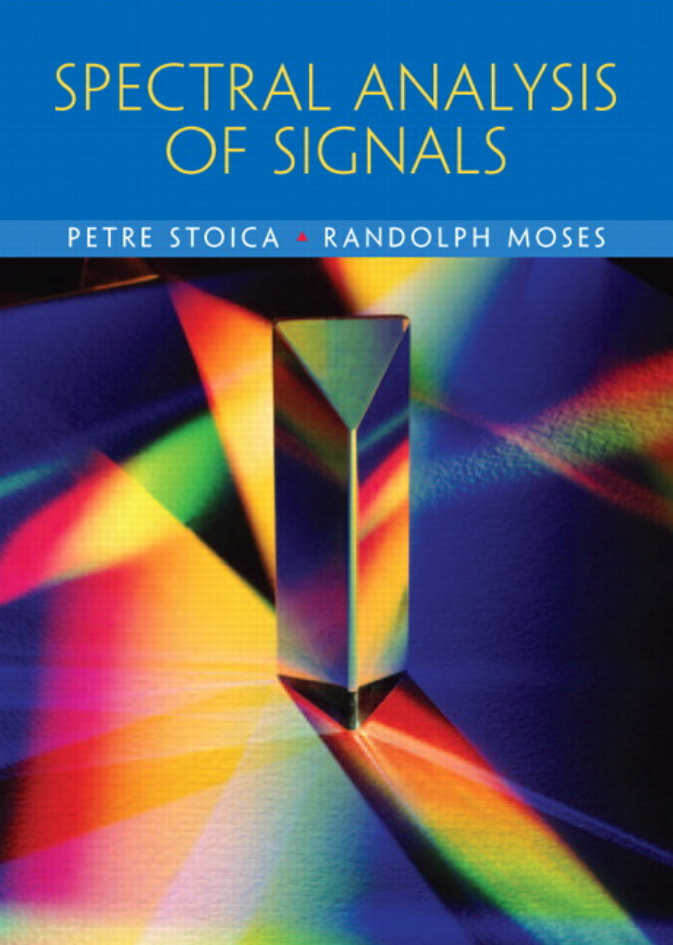
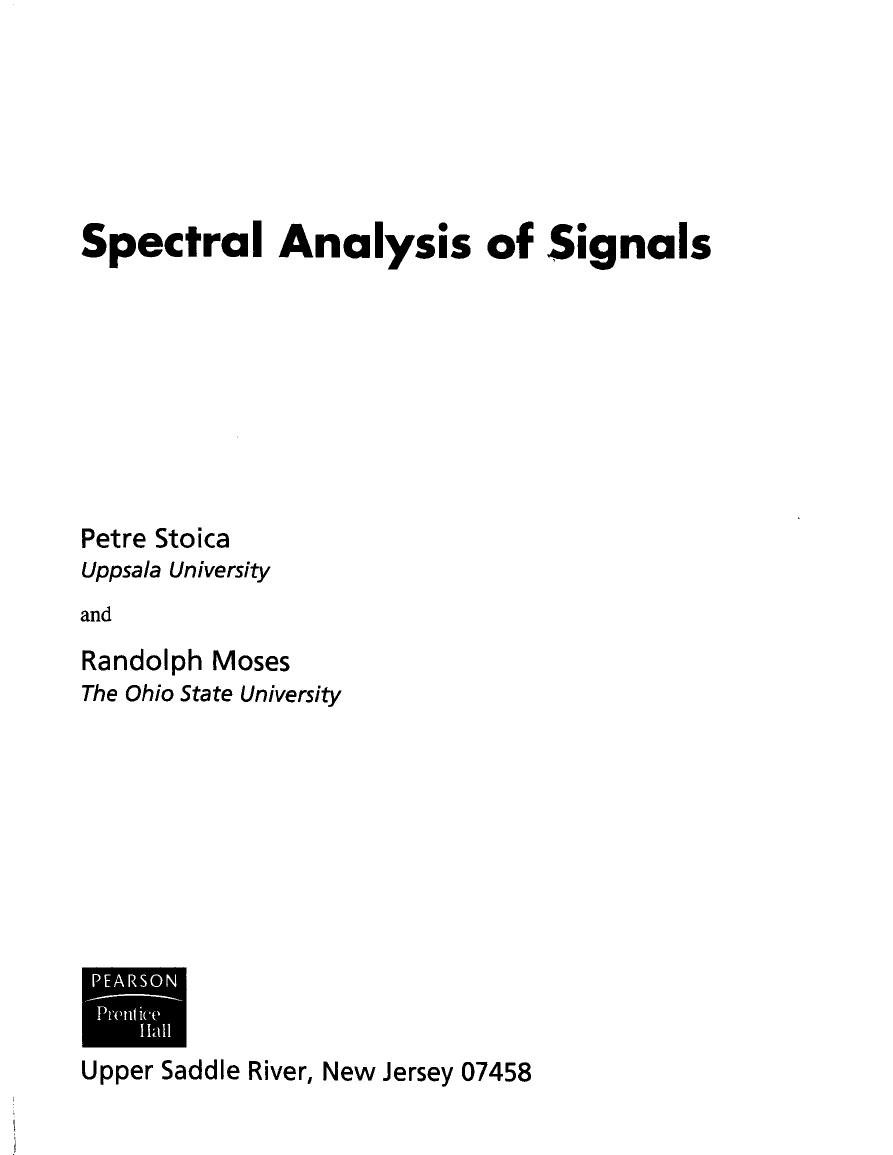
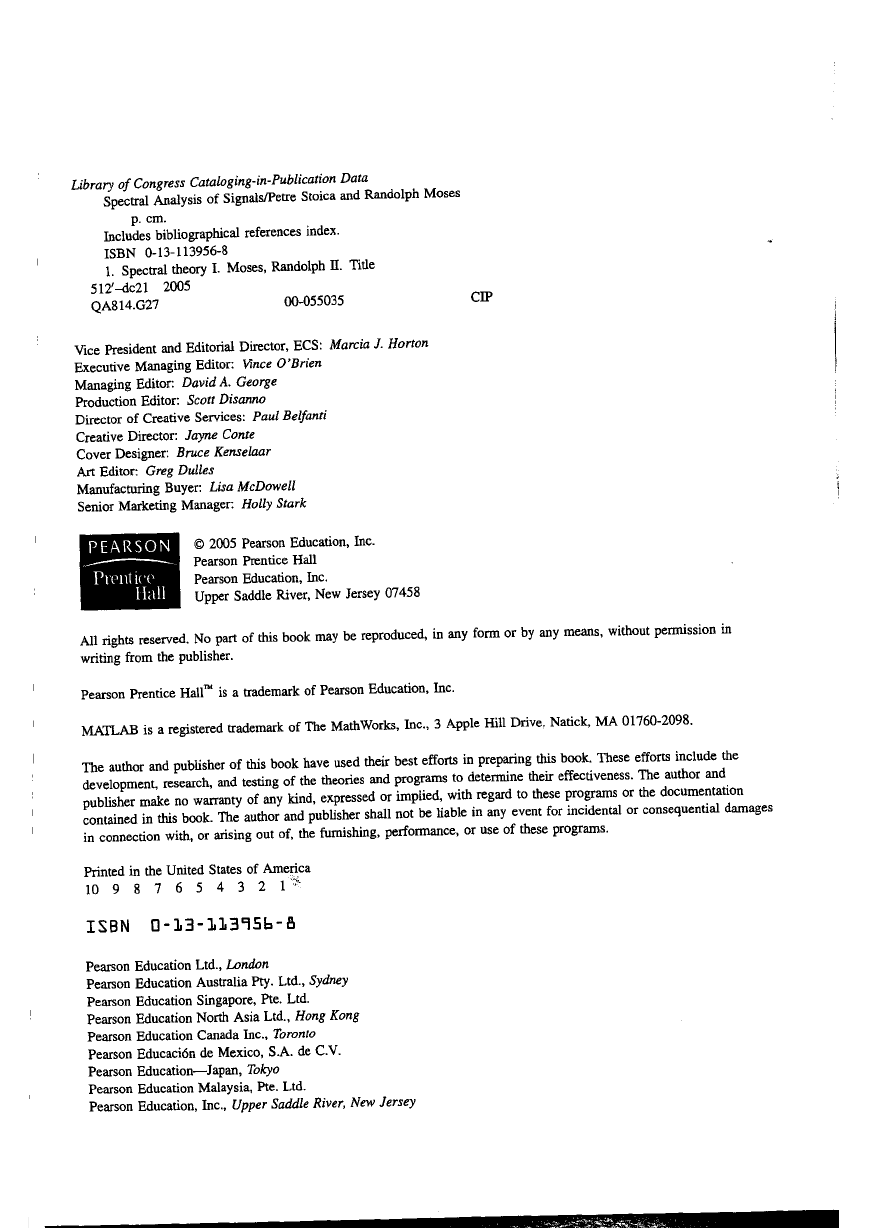
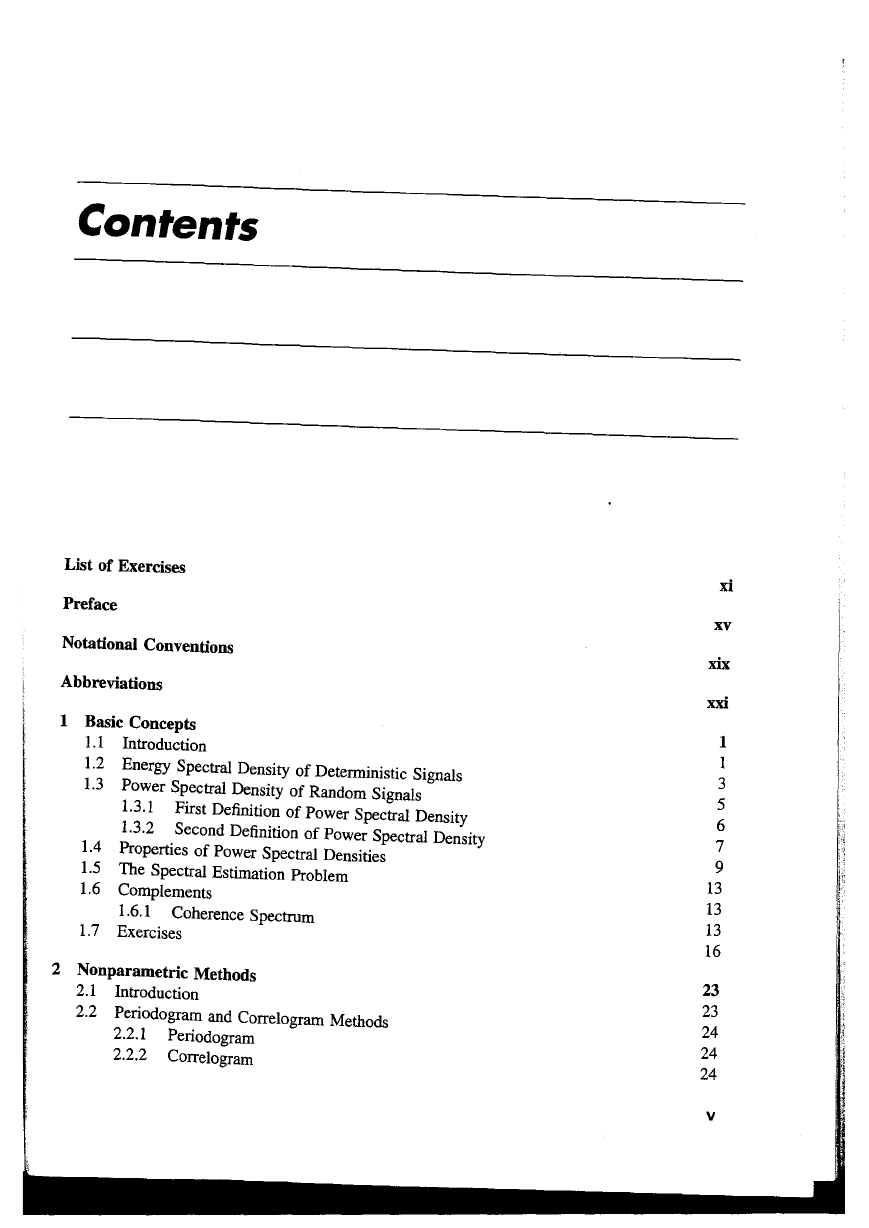
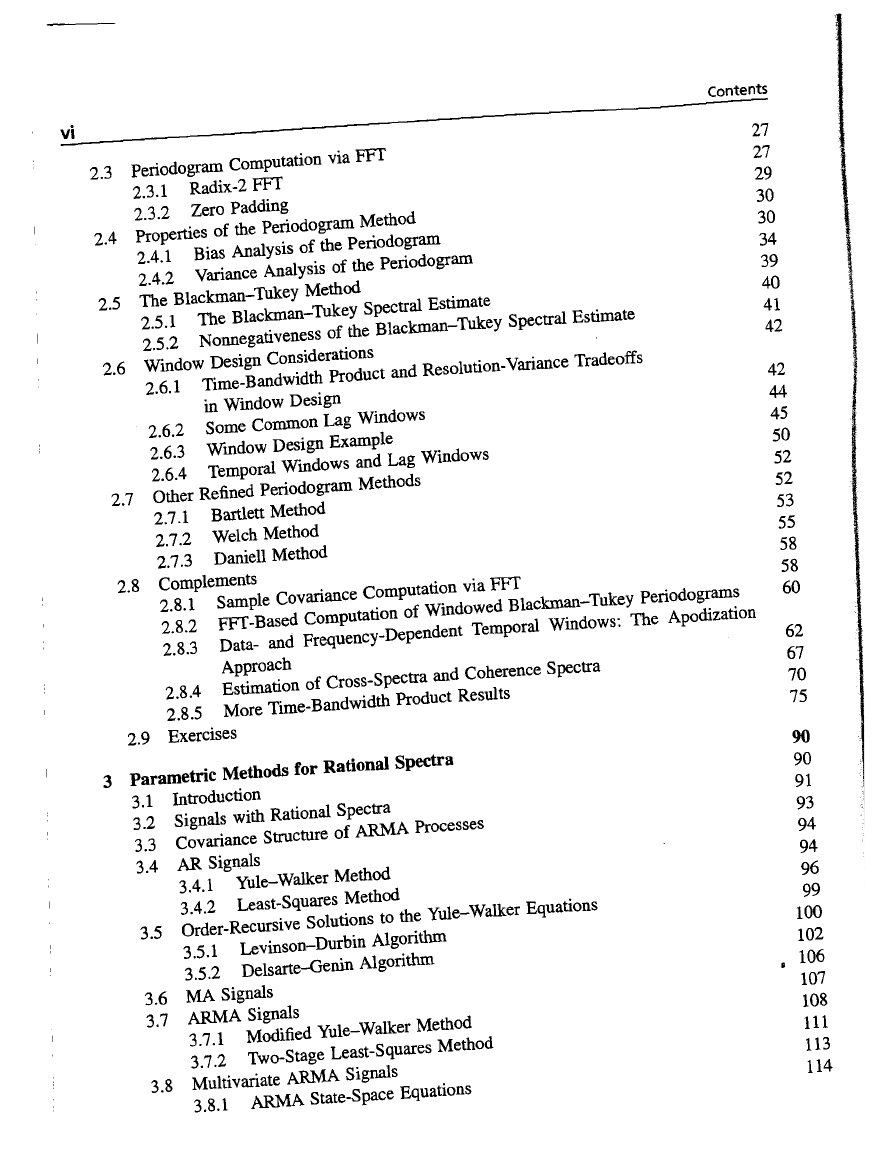
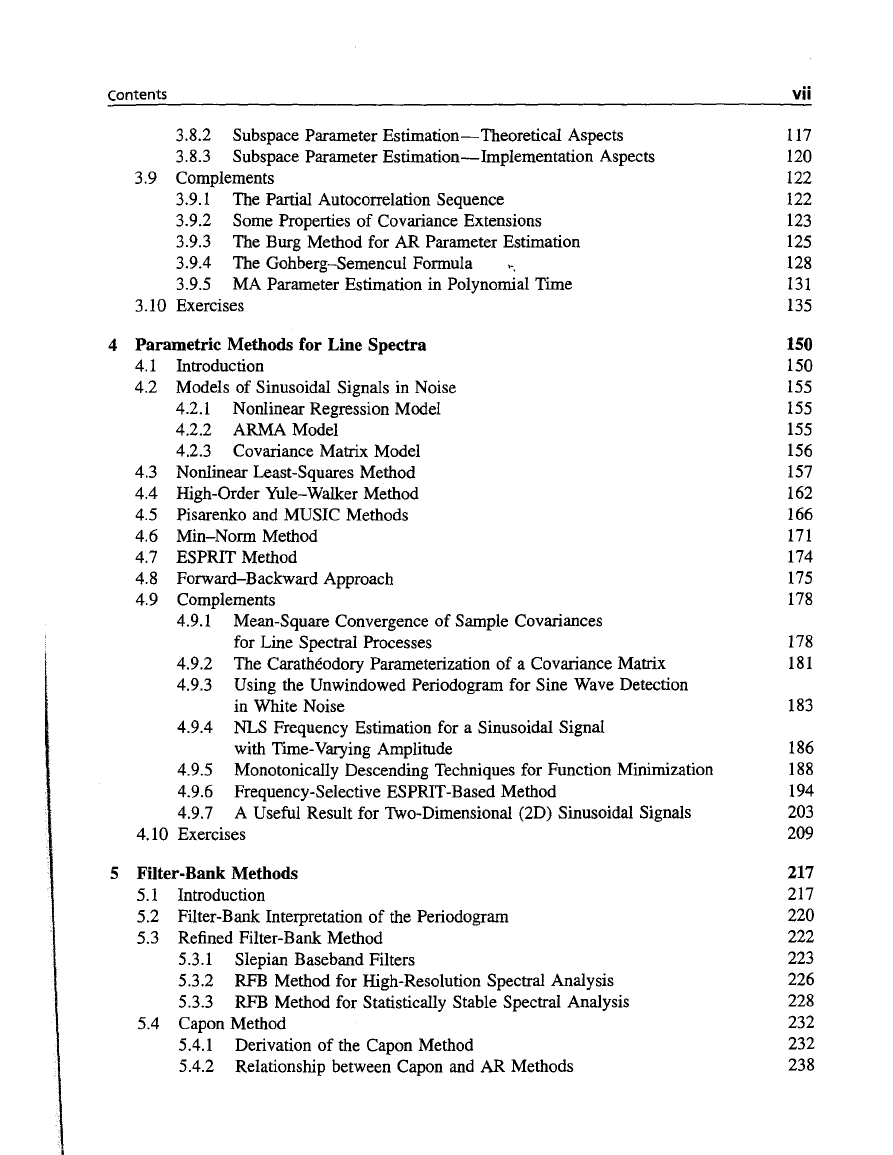

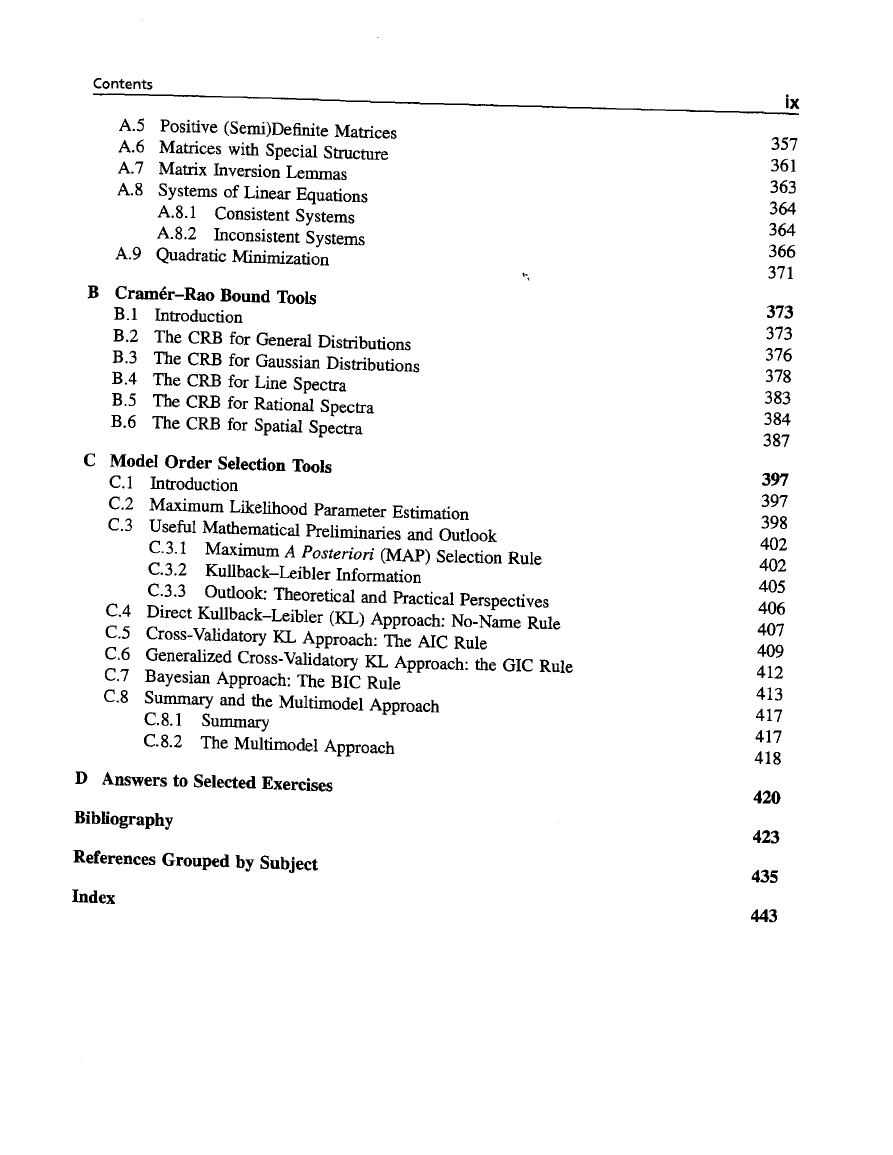








 2023年江西萍乡中考道德与法治真题及答案.doc
2023年江西萍乡中考道德与法治真题及答案.doc 2012年重庆南川中考生物真题及答案.doc
2012年重庆南川中考生物真题及答案.doc 2013年江西师范大学地理学综合及文艺理论基础考研真题.doc
2013年江西师范大学地理学综合及文艺理论基础考研真题.doc 2020年四川甘孜小升初语文真题及答案I卷.doc
2020年四川甘孜小升初语文真题及答案I卷.doc 2020年注册岩土工程师专业基础考试真题及答案.doc
2020年注册岩土工程师专业基础考试真题及答案.doc 2023-2024学年福建省厦门市九年级上学期数学月考试题及答案.doc
2023-2024学年福建省厦门市九年级上学期数学月考试题及答案.doc 2021-2022学年辽宁省沈阳市大东区九年级上学期语文期末试题及答案.doc
2021-2022学年辽宁省沈阳市大东区九年级上学期语文期末试题及答案.doc 2022-2023学年北京东城区初三第一学期物理期末试卷及答案.doc
2022-2023学年北京东城区初三第一学期物理期末试卷及答案.doc 2018上半年江西教师资格初中地理学科知识与教学能力真题及答案.doc
2018上半年江西教师资格初中地理学科知识与教学能力真题及答案.doc 2012年河北国家公务员申论考试真题及答案-省级.doc
2012年河北国家公务员申论考试真题及答案-省级.doc 2020-2021学年江苏省扬州市江都区邵樊片九年级上学期数学第一次质量检测试题及答案.doc
2020-2021学年江苏省扬州市江都区邵樊片九年级上学期数学第一次质量检测试题及答案.doc 2022下半年黑龙江教师资格证中学综合素质真题及答案.doc
2022下半年黑龙江教师资格证中学综合素质真题及答案.doc